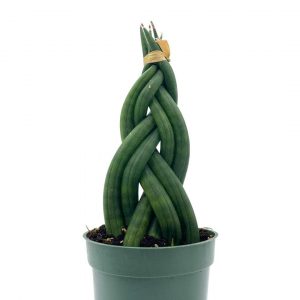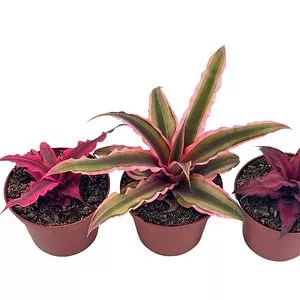No products in the cart.
Table of Contents
We all love avocados, especially avocado toast, right? However, this seasonal fruit can be expensive, so you want to grow one in your home.
Maybe you have seen photos online showing how to grow an avocado tree from the seeds. Yes, it might look easy with the toothpicks and placing them over a jar of water.
We have tried it, and the pit always shriveled or rotten. So today, we will show you how to grow an avocado with uncomplicated steps so that you can enjoy its fruit when the season comes.
How to Grow Avocado From Seed?
Okay, a question that keeps coming up is if you can grow an avocado tree from seed. The answer is that when you look at an avocado variety sold at nurseries for commercial use, they are grafted to provide reliable types for commercial use.
It is a fruit-bearing tree, but the fruits can be inferior or superior to your original avocado. So, the seed can be different. Another important thing when you want sprouted avocado fruit, is you know what the top half and the bottom are.
So, always remember when you grow your own avocado plant, the roots sprout from the bottom, and the stems sprout out of the top. So, it would be best if you placed the avocado pit top section facing up and not down. So, when you have the fruit in front of you, the top of the pit is pointed like the top of the fruit.
The bottom of the seed is flat where the roots sprout. Another helpful tip is that cracked avocado pits are great for planting.
Easy Way To Grow Your Own Avocado Trees

Growing an avocado is not too complicated, but you need patience, and there are different methods. So it takes time to plant an avocado from a nursery or one using the avocado seed.
The only difference is that when you start with a grafted tree, you can expect fruit in four years compared to using seed, which can take up to 13 years. So today, we will show you some easy steps using the avocado pit.
Growing Avocado From Seed With a Few Household Supplies

You may have seen a great gizmo sold online called the AvoSeedo made of plastic. Forget about them; they work like using three toothpicks and water. The method we have here works way better.
All you need are household supplies to ensure your avocado seed sprouts. Unfortunately, growing an avocado plant in moist, rich humus soil can be messy.
Preparing Avocado Seeds
Before you start, remember that this method can take up to six weeks for the seed to root and be ready for planting. You will need a ripe avocado fruit, a plastic food bag, and a paper towel.
Remove the avocado pits without a knife, which might damage the seed, so using a spoon is best.
Clean the pit under warm water with a cloth or soft brush to remove the fleshy part.
Take a damp paper towel and wrap the avocado seeds in it. Yet, it should not be soaking wet. You can use a tea towel if you want.
Place the wrapped pit in the plastic bag and store it in a dark cupboard with a room temperature of 70 °F/21 °C. So no direct sunlight is best for the seed to sprout.
Every four days, check on the seed and make a note on your calendar not to forget. Keep the paper towel damp, and keep an eye out for germination.

You will notice the pit cracking open to reveal a split and start to root out. But do not break it apart as the body feeds the growth of the root.
Also, handle the avocado roots carefully, as these babies are delicate. After a month, you will notice more roots developing.
When you notice the roots about three inches long, your avo seed is ready for planting in a flower pot. So keep reading to find out later what your next step will be.
Grow An Avocado Tree Using The Toothpick Method

We know we said forget about the toothpick method, but it is still worth sharing. As previously, you must remove the pit without cutting it.
Wash it clean under warm running water to remove the flesh. But do not remove that brown skin on the avocado seeds.
Locate the ends of the seeds, as some are oblong while others are spheres. The pointer end is the top, and the flat end is the bottom, where the roots sprout.
Take four or three toothpicks and stick them at a downward angle into the pit evenly spaced. These sticks act as scaffolding allowing the broad end to remain in the water.
Now place half the seed in a small glass with water and set it in direct sunlight on the window sill in a warm place. It helps to use clear glass to see when to replace the water. Replenish water every five days.
Next, you need to wait for that seed to develop new growth, which can take up to four weeks or a bit longer.
The top section dries out, forming a crack extending to the bottom half. A Tiny root system will emerge, growing longer and might even branch.
Then you will notice a tiny sprout peeking out from the top. The taproot must not go dry, so keep it moist.
In stock In stock In stock In stock
Free Shipping
$8.59 – $58.00
Sold By:
CZ Grain
Wisteria Vine Seeds – Highly Prized Flowering Plant for Garden, Yard, or Bonsai, Wisteria sinensis
Rated 4.60 out of 5 based on 156 customer ratings00
Sold By:
CZ Grain
$19.99
Sold By:
BubbleBlooms
Braided Snakeplant African Spear Plant, Cylindrical snake plant, spear sansevieria, twisted, braid sansevieria, big in 4 inch pot, large
Only 99 available and it’s in 2 people’s basket Rated 4.81 out of 5 based on 279 customer ratings04
Sold By:
BubbleBlooms
$15.00
Sold By:
Smoot's Farm
Lilium OT Oriental Trumpet Hybrid Lily Mister Cas White Yellow 3
Rated 4.89 out of 5 based on 27 customer ratings00
Sold By:
Smoot's Farm
Free Shipping
$39.95
Sold By:
CKK PRODUCTS LLC
Kousa Dogwood tree seedling
Only 3 available and it’s in 1 people’s basket Rated 5.00 out of 5 based on 1 customer rating00
Sold By:
CKK PRODUCTS LLC
Using Soil Method to Grow Avocado
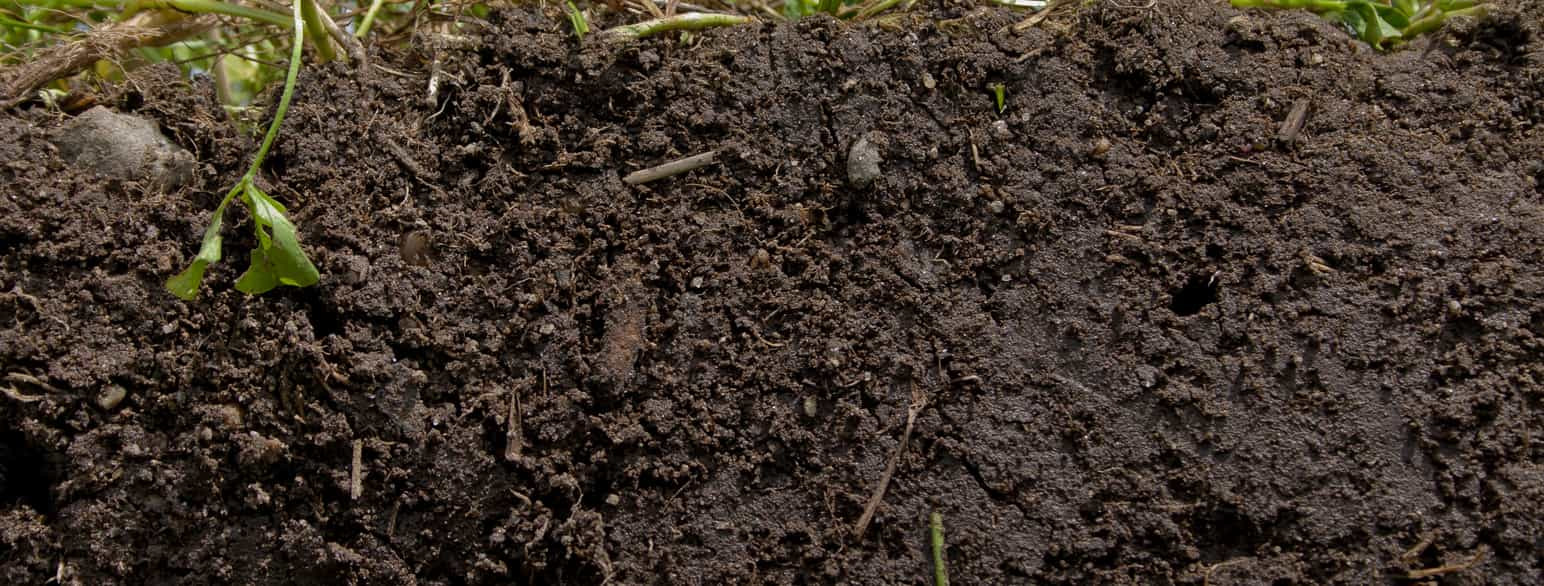
Another method is to plant the avocado seed directly into rich, humusy soil.
With the seeds removed, you can rinse and peel the brown skin off and make shallow cuts on the avocado seed to help speed up germination.
Place soil in a container and moisten it, preferably slightly acidic, with good drainage. Be careful with over-watering and allow the excess water to drain from the pot.
Press the bottom of the seed into the soil surface and leave half of it visible.
Keep the pot in a warm spot with indirect sunlight and not bright sunlight.
Take care of cold weather and best kept in a window. Water regularly as the soil surface dries out and wait for the stem to roots to sprout.
Ensure to pinch off the new leaves to encourage bushier growth. You can do this when your seedling grows another six inches tall every time.
You can cut the stem in half when it reaches six inches tall to encourage new growth. But only do this when you notice a set of leaves below the cut you want to make.
Planting Your Sprouted Avocado Seed
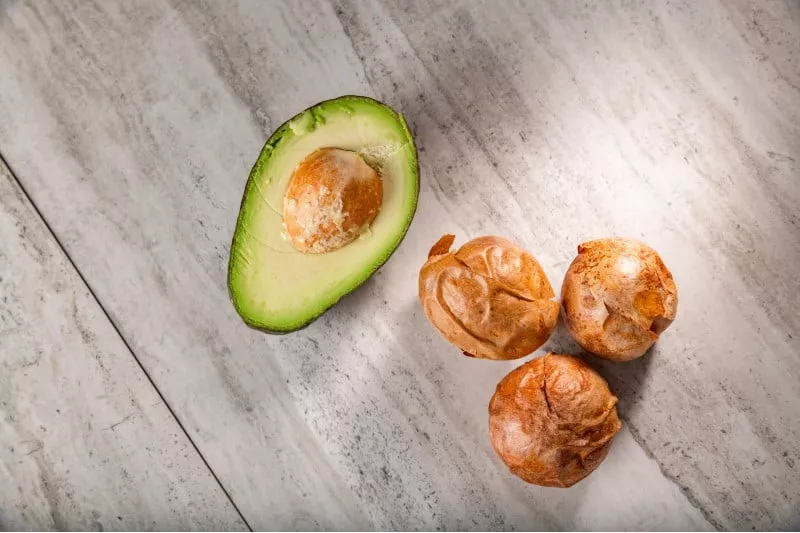
Now that your avocado pit sprouted, it is time to get it into some rich potting soil. First, you will need a container with drainage holes and some garden soil. As your avocado plants grow, they love to have ample drainage. So, you can amend the mix with some sand or perlite.
Fill the pot halfway with your growing medium.
Then gently remove the pit and place the roots in the container.
You can cut the roots back using clean scissors if the roots are long.
Press the ground down and add more as needed while leaving the top inch above the soil if there is no stem.
Take some distilled room temperature water to moisten the soil and place it in a spot with indirect light without drafts. Also, take care of winter temperatures as the plant grows well on a sunny windowsill with sheer curtains.
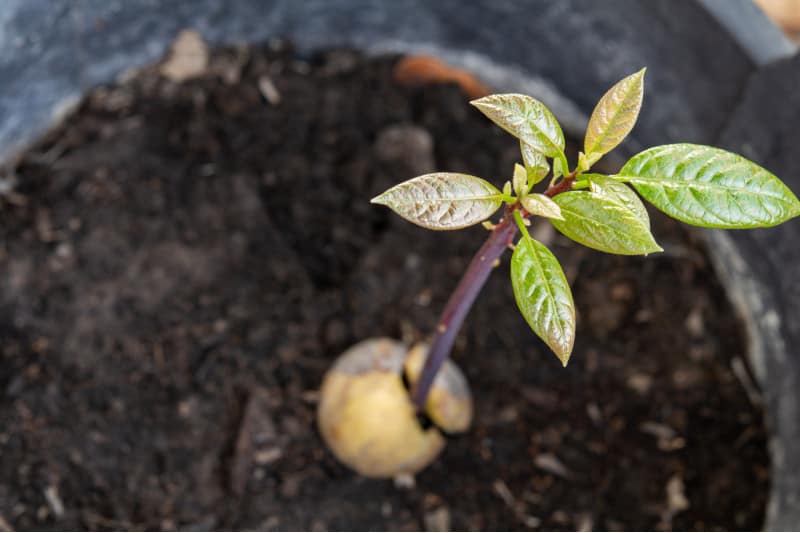
Finally, it is time to take care of your sprouted seed to ensure that it grows well. The important thing to remember is that the avocado plant has a shallow root system. So, there is no need to use deep pots. Instead, you can place your plant in direct sun or partial shade as they thrive in humidity and warmth.
When you place your avo tree inside the home, put it a bit back from the window for full sun. Keep the soil moist for root growth but not too dry. You can start by giving the tree an occasional deep soak and letting the water drain from below. Recent research indicates that acidic soil makes the perfect mix for your tree.
Using your fingertip, you can check the soil moisture to feel if the ground is near dry. But you can also give your avocado a spray of mist on the leaves and wipe them off to remove the dust. Once the leaves form, you can add an organic fertilizer such as vermicast or compost every 3 months.
To prevent a leggy stem and having several leaves, you can remove the top ones to encourage side growth. So you can snip the top of the tree trunk to grow lateral shoots. Then, when pinching back, you follow the main stem from the tip down until you have the next set of leaves.
Remove the stem above the leaves, and you can do this every four to six months. If you find multiple sets of foliage on the tree trunk, you can cut them back further to manage growth. But do not remove more than a third of your plant.
With time you might need to report your avo tree up to the next sized pot, and by the time it reaches a 24-inch wide container, it might surprise you with some fruit.
Avocado Plant Care Tips:
When you place your Avo tree inside the home, put it back from the window for full sun.
Keep the soil moist for root growth but not too dry. You can start by giving the tree an occasional deep soak and letting the water drain from below. Recent research indicates that acidic soil makes the perfect mix for your tree.
Using your fingertip, you can check the soil moisture to feel if the ground is near dry.
But you can also spray your avocado with mist on the leaves and wipe them off to remove the dust. Once the leaves form, add an organic fertilizer such as vermicast or compost every three months.
You can remove the top ones to prevent a leggy stem and have several leaves to encourage side growth. So you can snip the top of the stem to grow lateral shoots. Then, when pinching back, you follow the main branch from the tip down until you have the next set of leaves.
Remove the stem above the leaves; you can do this every four to six months.
If you find multiple foliage sets on the tree trunk, you can cut them back further to manage growth. But do not remove more than a third of your plant.
With time you might need to repot your avo tree up to a larger pot, and by the time it reaches a 24-inch wide container, it might surprise you with some fruit.
Sexual Reproduction of Avos
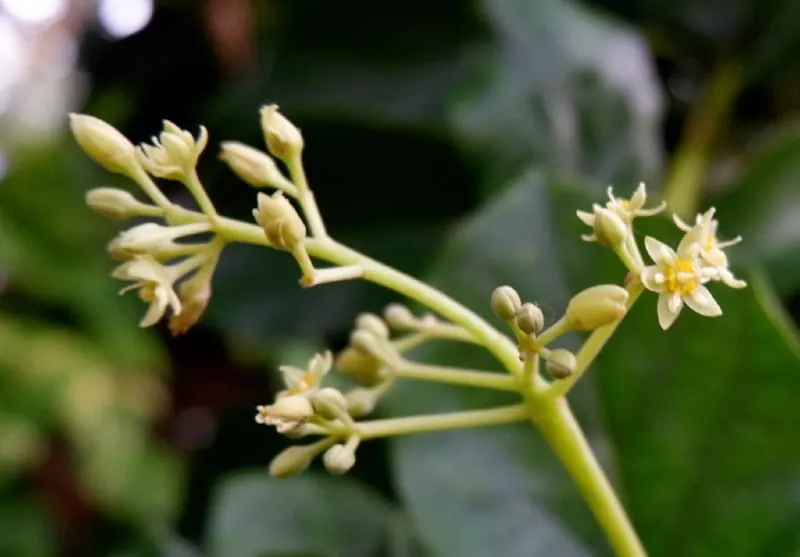
Now, this is where things become interesting. The fantastic thing is that avocado is self-fertile, comprising two types. In the morning, one produces male flowers while the female blooms in the afternoon.
Then, you have ones doing the opposite. When two flowers overlap, pollination takes place. So it helps to have both types to make sure this indoor plant grows to set fruit. The sad part is if you keep your avo inside, the tree will never bear fruit unless you have a tropical climate.
So, it is best to transplant your tree outside and provide it with similar growing conditions as inside.
Planting Young Trees to Produce Fruit
Another essential thing when transplanting young trees is bought at a nursery or online, you need to consider the following:
Home growers must remember that they thrive in warm temperatures with moderate humidity to grow an avocado tree.
Plant trees in spring after the last frost and grow avocados in a non-lawn area away from structures. Also, keep them protected from frost and wind in full sun.
Dig a hole the same size as the root ball in depth but a bit wider, and keep the feeder roots in the top six inches of the soil.
Keep the root ball at the same soil level as in the container received. If the tree is root-bound, loosen the soil around the roots and clip them to lay them in circles.
Elevate your tree in a mound for heavy clay soils to help with drainage.
Young trees need regular watering first, while mature trees only need watering once a week, depending on the climate. But check the soil before watering.
You can mulch around the tree using cocoa bean husks, shredded tree bark, or redwood bark.
Fertilize your trees with a nitrogen feed yearly by spreading it around the trunk and giving them zinc.
Final Thought
So, are you ready to plant your own avocado tree? Be sure to save and plant the seeds the next time you buy your favorite avocado fruits.
Frequently Asked Questions
The flowering patterns of avocados fall into two groups, an A and B type. The A-type female flowers open up in the morning, with the male blooms in the afternoon. With B-type, the opposite happens with the flowers. So, it helps to grow avocado seeds from both varieties for fruit production, but not always needed.
An optimum fruit set takes place between 65 °F to 75 °F, and warm temperatures are ideal for this to happen. Fruits not grown from pollinated flowers are small yet elongated and will fall to the ground. But if they hang on, you can still pick them to enjoy a snack-size avo treat. They are called cukes and sold as finger or cocktail avos.
Fruit drop happens when not all the fruits are set and mature, which is typical. Still, to minimize this from happening, it helps to prevent stress on the tree. Never overwater your trees, and introduce other varieties as well to help with pollination. Even over-fertilizing can cause fruit drop.
Most plants grow to reach about 35 feet in 30 years, and pruning them helps to keep them manageable at 15 feet tall.
Avocados do not ripen on the tree and will not get soft on the tree. Once you pick avocados, it can take up to 21 days to soften at room temperature. But placing each fruit in a paper bag with other fruits like a banana or apple speeds up the process in a refrigerator. I put mine in a paper bag and leave them in a cupboard out of bright light.
The best is to leave the fruit to reach a mature size on the tree before picking them. But it helps to keep picking them from the tree and leave them to ripen. If the skin is rubbery, they are not yet ready for picking.
Whether you want to buy, sell, or simply reach out to other plant enthusiasts, Plantly is the right place to be!
-
Free Shipping$19.99Sold By: Twigz Nursery
$22.00In stock
Weeping Willow Bonsai Willow Tree Cutting Kit – Live Bonsai Tree
Only 986 available and it’s in 7 people’s basketRated 4.93 out of 5 based on 90 customer ratings07Sold By: Twigz Nursery -
$17.99Sold By: BubbleBlooms
$19.99In stock
Cryptanthus bivittatus Assortment, Earth Star Bromeliad Set, 3 Different Succulents
Only 994 available and it’s in 3 people’s basketRated 4.81 out of 5 based on 279 customer ratings00Sold By: BubbleBlooms -
$9.99Sold By: Cacti and Exotica
In stock
4″ Crassula–Calico kitten
Rated 4.98 out of 5 based on 59 customer ratings00Sold By: Cacti and Exotica -
$35.99Sold By: Succulent Oasis
In stock
Mature Echeveria Swirl Hybrid.
Rated 4.84 out of 5 based on 352 customer ratings00Sold By: Succulent Oasis

